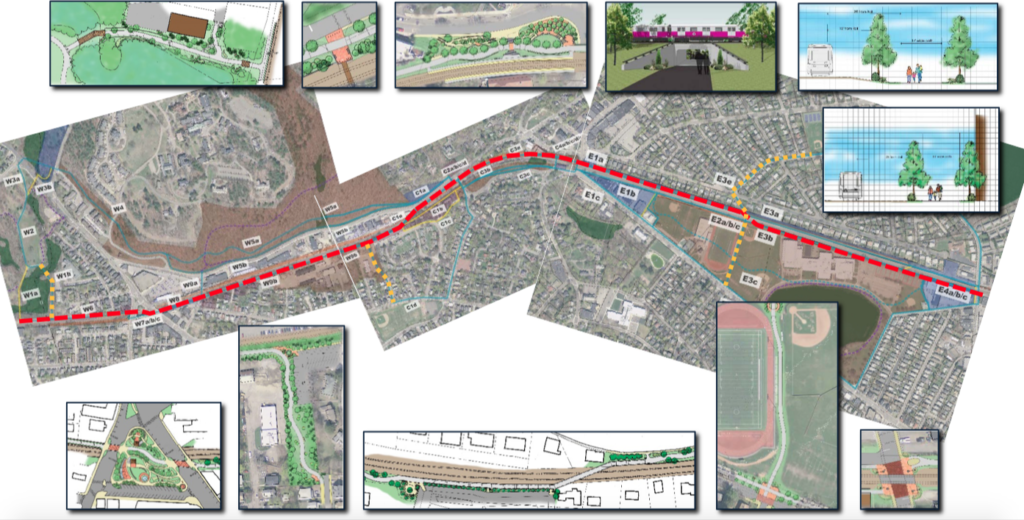Photo: The location of the design presentation of the Belmont Community Path
The Belmont Community Path Project Committee invites residents and the public to join the Town of Belmont’s design consultant Nitsch Engineering for a public presentation (via Zoom webinar) of the 25 percent design plans for the Phase 1 of the Belmont Community Path on Thursday, Nov. 4 at 7 p.m.
Phase 1 of the Community Path will extend from the end of the existing Fitchburg Cutoff Path at Brighton Street on the Cambridge line through Belmont Center Station and to the existing Clark Street Pedestrian Bridge at Pleasant Street, and will include a spur at Alexander Avenue connecting the Winn Brook neighborhood to the Belmont High School and Middle School and Concord Avenue via a tunnel under the MBTA Fitchburg Line.
Phase 1 of the Belmont Community Path has been determined by the state to be eligible for Transportation Improvement Program (TIP) funding for construction and the submission of the 25 percent design plans to MassDOT (which occurred on Nov. 3) is an important milestone towards securing TIP funding and generally moving the project toward completion.
During the presentation, the design consultant will walk through the 25 percent design plans, discuss updates to the plans since the draft set of plans were presented in July 2020, discuss next steps for the project (including further opportunities for public input), and answer questions and take comments and feedback on the plans.
The 25 percent design plans are posted for review at https://belmontcommunitypath.com/2021/11/25-submission-public-information-meeting/. For those who wish to watch the presentation again or for the first time, the event will be recorded by the Belmont Media Center.
